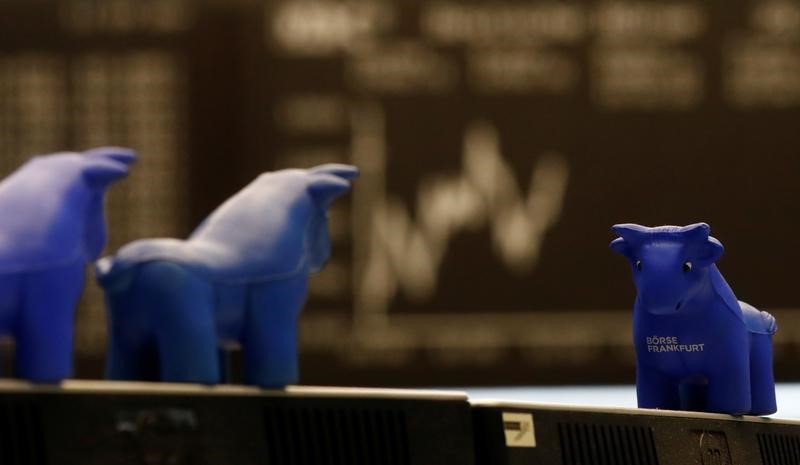© Reuters.
By Peter Nurse
Investing.com – European stock markets edged higher Thursday, helped by healthy German industrial production growth, but risk sentiment remains fragile as investors fret about a global economic slowdown.
At 03:45 ET (07:45 GMT), the in Germany traded 0.1% higher, the in France climbed 0.2% and the in the U.K. rose 0.5%.
Data released earlier Thursday showed that rose 2.0% on the month in February, significantly more than the 0.1% expected, while the figure for January was adjusted to a 3.7% increase, up from 3.5%.
There was also good news out of Asia, as China’s in March expanded at the quickest pace in over 2 years, the Caixin/S&P Global services purchasing managers’ index showed, helped by a post-COVID recovery.
That said, trading ranges are likely to be tight in Europe ahead of the Good Friday holiday when the U.S. will release the widely-watched monthly data.
Concerns that a cooling U.S. economy could lead the rest of the world into recession are likely to limit any gains Thursday.
Data released Wednesday showed that the U.S. slowed more than expected in March, adding to signs of a cooling labor market after U.S. dropped to their lowest in nearly two years in February.
Additionally, the International Monetary Fund warned Wednesday that rising geopolitical tensions, mainly between the U.S. and China, risk damaging the global economy, potentially hitting global output by 1% in five years and 2% long term.
In corporate news, Shell (LON:) stock moved higher after the energy giant said it expects higher liquefied natural gas output in the first quarter after outages at its Australian plants last year, while its oil products division is also set to post a “significantly higher” trading performance.
Oil prices fell Thursday as the weak U.S. data raised fears about a potential recession in the world’s largest energy consumer, but are still on course for a third consecutive positive week after a fall in U.S. crude inventories and the unexpected OPEC+ output cut.
By 03:45 ET, futures traded 0.4% lower at $80.30 a barrel, while the contract dropped 0.3% to $84.72.
However, both benchmarks have gained more than 6% this week after the Organization of the Petroleum Exporting Countries and allies including Russia, a group known as OPEC+, agreed to further cut crude production and U.S. crude oil inventories fell by 3.7 million barrels last week, official data showed Wednesday.
Additionally, fell 0.1% to $2,033.85/oz, while traded 0.1% higher at 1.0911.
Read the full article here










